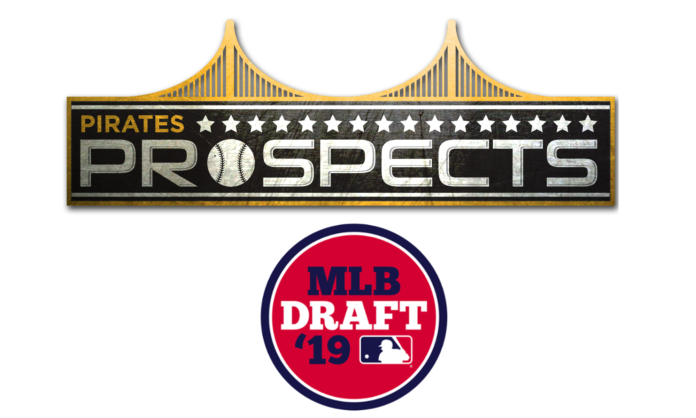Every Sunday, we are going to take a look at two top draft prospects in this upcoming June amateur draft. The Pittsburgh Pirates make their first selection with the 18th overall pick. They also have the 37th overall pick. Our players featured each week will be those who are ranked on prospect lists in the general area of the 18th pick, while also showing some players who could be available when the Pirates make their second pick.
In our first article, we take a look at two very different pitchers. One is a prep right-hander, while the other is a college southpaw. In the following weeks, we will keep a running list of each report to make it easy to check out previous articles. You can check out our draft preview here.
In our first Draft Prospect Watch, we took a look at pitchers Matthew Allan and Zack Thompson. Today we look at our first two position players.
Keith Law posted his top 30 draft prospects on Tuesday for ESPN Insiders and he had high school third baseman Brett Baty ranked 18th overall. Baty was on our schedule of players to cover, but we moved him up a few weeks after these new rankings from Law.
Baty is a power bat at third base, with some of the best raw power in the entire draft class. It’s possible that he ends up as the best power bat in the class. At 6’3″, 218 pounds, he is already an imposing figure as a high school senior. According to Baseball America, his quick, uppercut swing from the left side produces a ton of hard contact and he uses the entire field. He can hit the ball out to any part of the park.
One big issue with him is that he is not a guarantee to stick at third base. If he was, then he would be a top ten pick. He has more than enough arm to play there, but scouts question if he has the hands and quickness to play the spot. If he ends up as a first baseman, then it puts a lot more pressure on the bat to be a plus tool. He doesn’t have speed either, so it’s really an all bat profile if he’s at first base, as that spot would negate some of the value coming from his plus arm.
There’s a second issue with Baty and that’s his age. He turned 19 in November. He’s older than some JUCO players in the draft, so it takes away some of the projection that you usually have with a high school player. For a prep player, he would have been middle of the road for age in the 2018 draft class. For reference, last year’s high school picks (Braxton Ashcraft, Michael Burrows and Jack Herman) are all within 4-5 weeks of his age, with Michael Burrows being a month younger.
Baty has a commitment to Texas, but if he’s drafted 18th overall, he won’t say no to the money that comes along with that draft slot. He might think about it if he drops in the draft because his age would make him draft-eligible as a sophomore, so he wouldn’t have to wait three years. He got off to a hot start this year, reaching base 13 times in his first four games, including four homers.
Here are two videos of Baty. First is from 2080 Baseball and it shows fielding, batting practice and game at-bats.
This is from Donald Boyles and gives you a good look at his swing.
Auburn shortstop Will Holland is much different than Brett Baty. Holland is a college player, with speed and defense as his key tools. At 5’10”, 181 pounds, he is much smaller than Baty, but he’s also much more athletic.
Holland has all of the defensive tools you want to see from a shortstop. His defense isn’t polished, but with more time, he should be able to stick at the position at the highest level, and there is a chance he ends up as a plus defender. He has plus speed and he’s a smart base runner, though that hasn’t translated yet to the stolen base totals you’d like to see. He’s a small player, but has shown power already, often making solid contact, while using his speed to take extra bases.
Holland hasn’t put up a strong average through his team’s first nine games of the season, but he is still getting on base. His .172/.385/.241 slash line is pushed by ten walks. He has two doubles and he’s 3-for-4 in steals. In his college career, he put up mediocre stats as a freshman in 45 games, then played full-time as a sophomore and had a terrific .313/.430/.506 slash line in 66 games.
He appears to be addressing one of his main problem areas so far this spring. He can tend to get overly aggressive at the plate, which has led to a low walk total in the past and a slightly high strikeout rate. His OBP last year was boosted by a high number of hit-by-pitches. Havin ten walks already this early in the season is a strong sign, but something that he will have to continue, and do while hitting for average.
Here are two videos for Holland. The first is from Vincent Cervino, which shows batting practice, fielding and game at-bats
The second video also shows BP, fielding and game action, and it comes from Scout Trio


